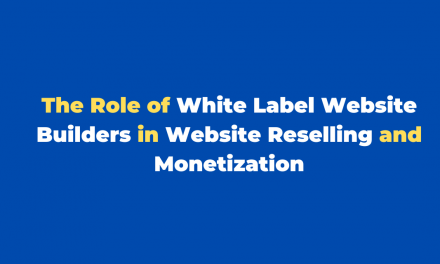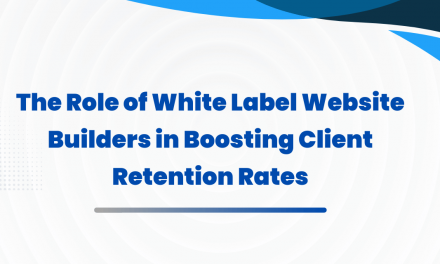Create Your Own Website Easily with a White Label Website Builder
In today’s digital age, having a professional online presence is crucial for businesses and individuals alike. Whether you want to showcase your portfolio, promote your brand, or sell products online, creating your own website has never been easier thanks to the emergence of white label website builders. In this article, we will explore the concept of white label website builders, their benefits, and the steps you can take to create your own website using this innovative technology. We will also discuss tips to enhance your website’s performance, the importance of maintaining and updating your site, and even delve into some inspiring case studies of successful websites built with white label website builders.
Understanding the Concept of a White Label Website Builder
Before we dive into the intricacies of using a white label website builder, it is essential to grasp the concept behind this powerful tool. A white label website builder is a platform that enables individuals and businesses to create professional-looking websites without the need for any coding or design skills. Essentially, it allows you to utilize a pre-designed template and customize it to fit your specific needs.
When it comes to building a website, many people are intimidated by the technical skills required. However, with a white label website builder, you don’t need to worry about coding or design expertise. The platform takes care of all the technical aspects, allowing you to focus on creating compelling content and delivering a seamless user experience.
Imagine having access to a wide range of beautifully designed templates that you can easily customize to match your brand’s identity. With a white label website builder, you can choose from an extensive collection of templates, fonts, colors, and layouts, ensuring that your website stands out from the crowd.
What is a White Label Website Builder?
A white label website builder is a fully developed website building platform that is rebranded and offered by another company rather than the original developer. Think of it as a blank canvas that you can make your own with your branding and design choices. By using a white label website builder, you can focus on the content and functionality of your site while leaving the technical aspects to the experts.
One of the advantages of using a white label website builder is the ability to add your branding elements seamlessly. You can incorporate your logo, color scheme, and other visual elements to create a cohesive and professional-looking website that represents your brand accurately.
Additionally, a white label website builder allows you to customize the layout and structure of your site. You can easily rearrange sections, add or remove elements, and create a navigation menu that suits your website’s specific needs. This level of flexibility gives you complete control over the look and feel of your website.
Benefits of Using a White Label Website Builder
Using a white label website builder comes with numerous benefits. Firstly, it eliminates the need for hiring a professional web designer or developer, saving you both time and money. With pre-designed templates and drag-and-drop interfaces, you can create a stunning website in a matter of hours, regardless of your technical background.
Secondly, white label website builders offer a range of customization options. You can choose from a wide variety of templates, fonts, colors, and layouts to reflect your brand’s personality and style. This level of customization gives your website a unique and professional look that sets you apart from the competition.
Another advantage of using a white label website builder is the availability of essential features and functionalities. These platforms usually come with built-in SEO tools, e-commerce capabilities, and responsive design options. This means you can easily optimize your site for search engines, sell products online, and ensure a seamless user experience, all without hiring multiple specialists.
Furthermore, white label website builders often provide reliable hosting and technical support. This ensures that your website is running smoothly and allows you to focus on creating valuable content instead of dealing with technical issues.
In conclusion, a white label website builder is a powerful tool that empowers individuals and businesses to create professional-looking websites without the need for coding or design skills. With its range of customization options, essential features, and reliable support, it is an excellent choice for anyone looking to establish a strong online presence.
Steps to Create Your Own Website Using a White Label Website Builder
Now that we have a clear understanding of what a white label website builder is and the benefits it offers, let’s dive into the steps involved in creating your own website using this user-friendly platform.
Choosing the Right White Label Website Builder
The first step in creating your website is to select the right white label website builder for your needs. There are various options available in the market, each with its own set of features and pricing plans. Take the time to evaluate your requirements and compare different platforms before making a decision. Look for a builder that offers the necessary customization options, integrations, and support for your specific goals.
Customizing Your Website Design
Once you have chosen a white label website builder, it’s time to start customizing your website’s design. Browse through the available templates and select one that matches the style and tone of your brand. From there, you can modify colors, fonts, and layouts to ensure consistency with your brand identity. Remember to keep your design clean, user-friendly, and visually appealing to attract and retain visitors.
Adding Essential Features to Your Website
After fine-tuning your website’s design, it’s crucial to add essential features that enhance its functionality and user experience. This may include integrating contact forms, implementing live chat support, or incorporating social media sharing buttons. Consider the goals of your website and the needs of your target audience when deciding which features to include. Ensure that each element serves a purpose and contributes to the overall success of your site.
Tips to Enhance Your Website’s Performance
Creating a website is only the first step; ensuring its performance and visibility on the internet is equally important. Here are some tips to enhance your website’s performance:
SEO Best Practices for Your Website
Search Engine Optimization (SEO) is crucial in helping your website rank higher in search engine results. Optimize your content with relevant keywords, create compelling meta descriptions, and build quality backlinks to improve visibility. Regularly update your content and stay up-to-date with the latest SEO trends to maximize organic traffic to your site.
Integrating Social Media on Your Website
Social media platforms provide a great opportunity to engage with your audience and drive traffic to your website. Integrate social media sharing buttons and encourage visitors to follow your brand on platforms like Facebook, Instagram, and Twitter. Share valuable content regularly and interact with your followers to create a strong online presence.
Maintaining and Updating Your Website
Once your website is up and running, it is crucial to prioritize its maintenance and regular updates. Here’s why:
Importance of Regular Website Updates
Regular updates ensure that your website remains secure and compatible with the latest technologies. Outdated plugins or themes can pose security risks and affect the overall performance of your website. By keeping your website updated, you can provide a seamless user experience and protect your data from potential threats.
How to Handle Website Maintenance
Website maintenance involves tasks such as updating plugins, monitoring site analytics, and regularly backing up data. Consider implementing a scheduled maintenance routine to ensure all necessary updates and patches are applied promptly. Regularly check your website’s performance, fix broken links, and respond to user feedback to create a smooth browsing experience for your visitors.






